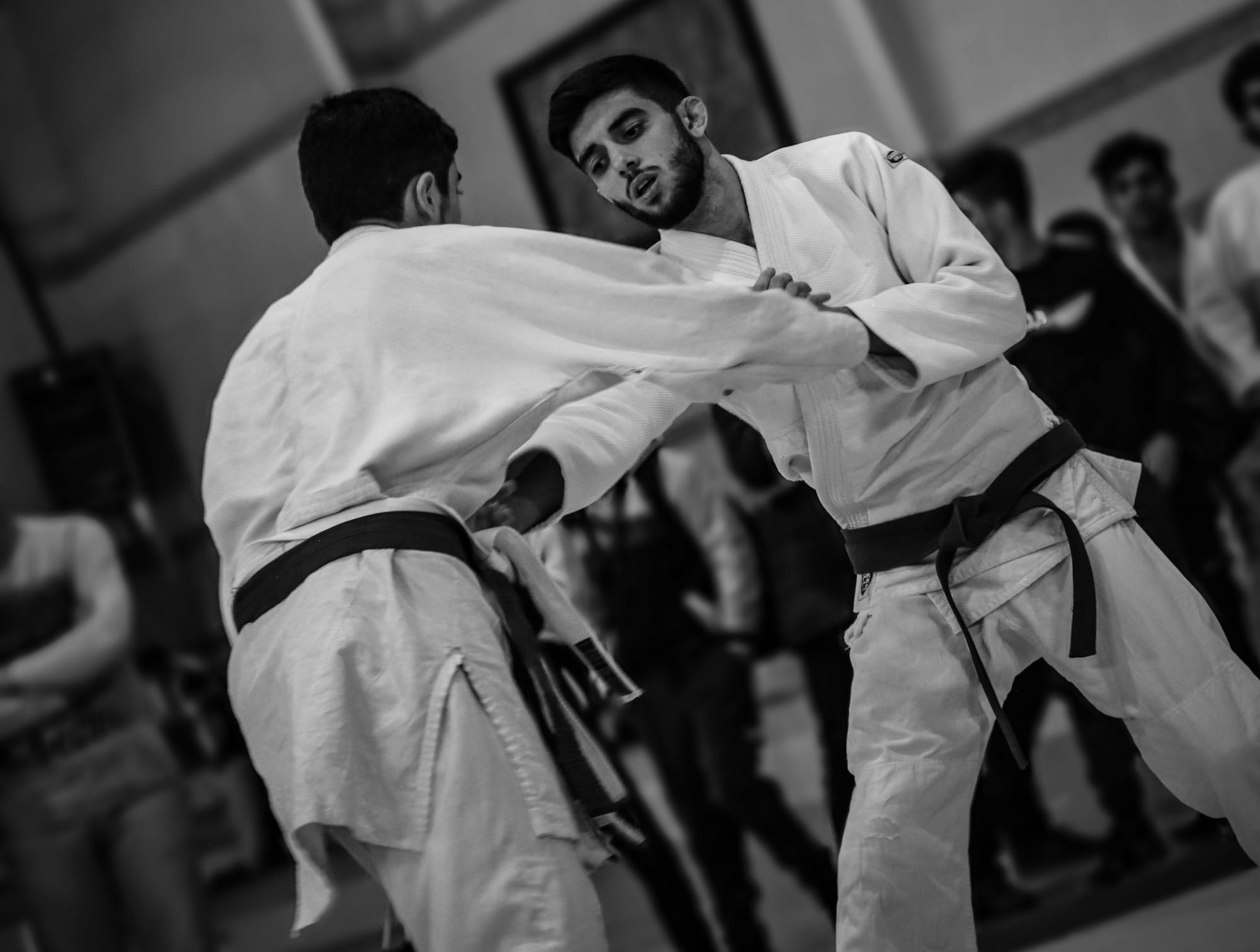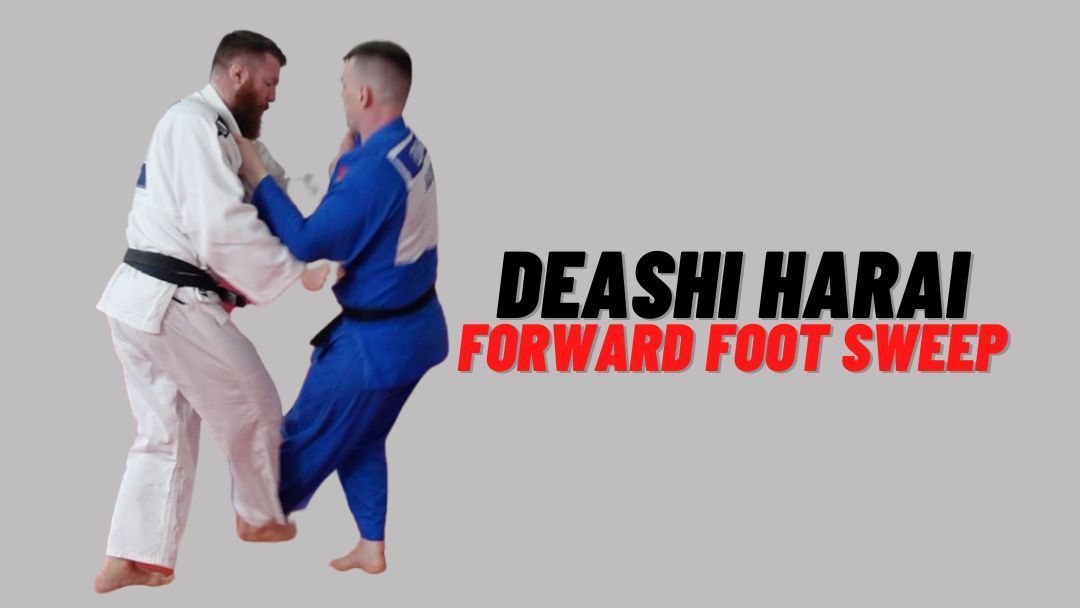Why Does a Simple Foot Sweep Work So Well?
You’re sparring, heart pounding, locked in with your partner—and then, whip. The mat meets your back before you even register what’s missing. (Hint: it was your foot.)
That’s De Ashi Harai, Judo’s minimalist masterpiece. Blink and you’re airborne.
But why does such a simple motion fold elite fighters like lawn chairs? Studies from Levitsldy et al. (2016) and Elipkhanov (2011) peel back the biomechanics of the sweep, revealing a technique that finesses physics, not force.
Spoiler: your leg’s just the bait.
In this NotebookLM podcast, we dive into De Ashi Harai, also known as advanced foot sweep or forward foot sweep, is a fundamental and effective Ashi Waza (Foot/Leg Technique) used in Judo to off-balance and control an opponent. In the episode, we explore the key themes and findings from three sources concerning the De Ashi Harai (advanced foot sweep) throwing technique in Judo.
⸻
Flat Pitch vs. Forward Lean
De Ashi Harai wears two faces, depending on your angle of attack:
- Low/Zero Pitch Version: The attacker (Tori) keeps their torso upright. This version minimizes the use of body mass center early in the throw. It’s cleaner and often recommended for beginners.
- High Pitch Version: Here, Tori leans into the throw, engaging the center of mass more actively. Think 16-20° of forward tilt—this version packs more off-balancing power but demands finer coordination.
Why care? Because pitch isn’t posture—it’s power dynamics. Low-pitch conserves energy; high-pitch commits it. Like choosing between a sniper shot and a sledgehammer.
For a visual demonstration of these mechanics in action, check out this video breakdown of De Ashi Harai, which highlights common execution points and timing cues.

⸻
What Your Muscles Are Really Doing
Contrary to dojo myth, the sweep isn’t just leg work. Muscle studies of elite female judokas show this is a full-body hustle:
- Long adductor (inner thigh): Located in the upper inner thigh, this muscle is responsible for pulling the leg inward—essential for sweeping. Think of them as the trigger.
- Rectus abdominis & external obliques (core/torso): These are the front and side muscles of your stomach area, your twist-and-crunch crew. They help you bend and twist your torso, which adds rotational power to your throw.
- Sartorius (upper thigh) & latissimus dorsi (upper back): The sartorius runs diagonally across the thigh and assists with leg movement and stability. The lats, large muscles on the back, help coordinate the sweeping motion with upper body control. These are the stabilizers that sync upper and lower halves.
- Pectoralis major (chest): Not just for flexing. This chest muscle helps guide your opponent to the mat through upper body control and arm movement.
It’s kinetic poetry. The faster these muscles fire in concert, the sharper the sweep.

Further Reading: Elipkhanov, Salman. (2011). MUSCLE'S ACTIVITY AT CARRYING OUT DE ASHI BARAY BY FEMALE JUDOWRESTLERS OF HIGH QUALIFICATION (IN RUSSIAN). Uchenye zapiski universiteta imeni P.F. Lesgafta. 11. 171-176. 10.5930/issn.1994-4683.2011.11.81.p171-176.
⸻
Learning the Sweet Spot
Beginners, take note: mastering the low-pitch version is your best bet. It builds foundational timing and coordination without overwhelming your motor skills. According to the Teoriya.ru study, keeping your body pitch under 30-40° is a solid benchmark.
Further reading: Levitsldy, A.G. & Matveyev, D.A. & Potsipun, A.A. & Shabaev, A.V.. (2016). Advanced foot sweep (de ashiharai) throw technique in judo: Body position analysis. 2016. 78-80.
As you progress, layering in body mass center engagement opens new tactical doors. But rush it, and you’ll likely trip over your own technique.
If you're looking for a hands-on walkthrough of the technique, this short instructional from Riki Judo Dojo on YouTube breaks it down with clarity and practical tips.

⸻
Precision Timing: The Invisible Ingredient
De Ashi Harai lives or dies by timing. This move isn’t about contact. It’s about collision with inevitability. De Ashi Harai lands when Uke commits weight to the foot you’re targeting. Sweep early? They step out. Sweep late? They’re already stable.
Perfect timing turns your opponent’s own motion into their downfall. It’s not violence—it’s choreography with consequences.

Takeaways for the Tatami
- Subtlety beats strength: De Ashi Harai thrives on subtlety and timing, not brute force.
- Two pitch strategies offer different strengths—start low, add lean later.
- Mastering muscle coordination boosts power and precision.
- Keep beginner training under 30-40° pitch to ensure control.
- Focus on whole-body engagement, especially core and hip dynamics.
Final Thought
De Ashi Harai isn’t a trick move. It’s a lesson in humility: that control trumps chaos, and awareness always wins. Learn it right, and every step becomes a setup.
So next time you're on the tatami, ask yourself: are you walking—or waiting to be swept?
Quiz: Which muscle group plays a significant role in creating the rotational movement during De Ashi Harai?
A. Calves – muscles at the back of your lower legs
B. Deltoids – shoulder muscles used to lift your arms
C. Abdominal muscles – muscles around your stomach and sides, used for twisting and bending your torso
D. Hamstrings – muscles at the back of your thighs, used for bending your knees
Answer
Correct Answer: C. Abdominal muscles.
Explanation: The abdominal muscles, especially the obliques and rectus abdominis, help drive the rotational torque needed for an effective sweep and off-balancing.
(1) Levitsldy, A.G. & Matveyev, D.A. & Potsipun, A.A. & Shabaev, A.V.. (2016). Advanced foot sweep (de ashiharai) throw technique in judo: Body position analysis. 2016. 78-80.
(2) Elipkhanov, Salman. (2011). MUSCLE'S ACTIVITY AT CARRYING OUT DE ASHI BARAY BY FEMALE JUDOWRESTLERS OF HIGH QUALIFICATION (IN RUSSIAN). Uchenye zapiski universiteta imeni P.F. Lesgafta. 11. 171-176. 10.5930/issn.1994-4683.2011.11.81.p171-176.
(3) Groom, D. (2024) Deashi harai, Judo Way Of Life. Available at: https://www.thejudowayoflife.com/deashi-harai (Accessed: 23 March 2025).





Member discussion: